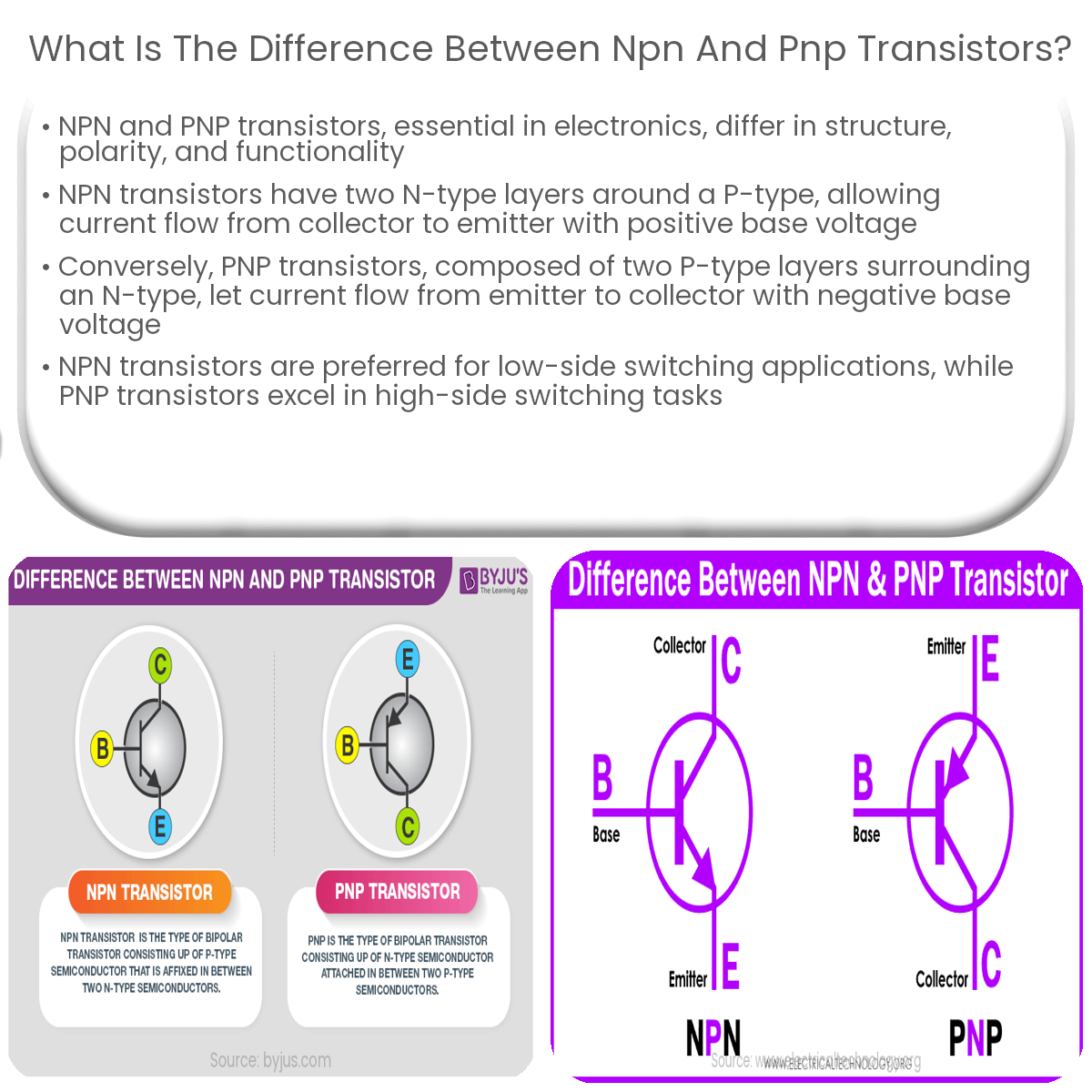NPN and PNP transistors have different structures, current flow directions, and input voltage polarities, impacting their applications in electronic devices.
NPN vs PNP Transistors
Transistors are fundamental building blocks in modern electronic devices, with two primary types: NPN and PNP. Both types serve similar purposes but have distinct internal structures and polarities.
Structure and Composition
Transistors consist of three layers of semiconductor material, either P-type or N-type. P-type material has an excess of positive charge carriers (holes), while N-type material contains an excess of negative charge carriers (electrons).
- NPN transistor: Composed of two N-type layers sandwiching a P-type layer. The layers are referred to as the emitter, base, and collector.
- PNP transistor: Consists of two P-type layers with a central N-type layer, also known as the emitter, base, and collector.
Current Flow and Polarity
The primary difference between NPN and PNP transistors is the direction of current flow and the required input voltage polarities.
- NPN transistor: Current flows from the collector to the emitter when a positive voltage is applied to the base. In essence, the transistor is turned “on” with a positive base voltage.
- PNP transistor: Current flows from the emitter to the collector when a negative voltage is applied to the base, activating the transistor with a negative base voltage.
Applications and Usage
Both NPN and PNP transistors are used in various electronic applications, including amplifiers, switches, and oscillators. However, their specific uses may differ due to their polarities.
- NPN transistor: Typically preferred in low-side switching applications and digital circuits, where the load is connected to the positive supply rail, and the transistor connects to ground.
- PNP transistor: Commonly used in high-side switching applications, where the transistor connects the load to the positive supply rail.
Summary
In summary, NPN and PNP transistors have different structures and polarities, which affect the direction of current flow and the input voltage required to turn them on. Both types are essential components in various electronic devices and circuits, with specific roles in amplification, switching, and oscillation applications.


